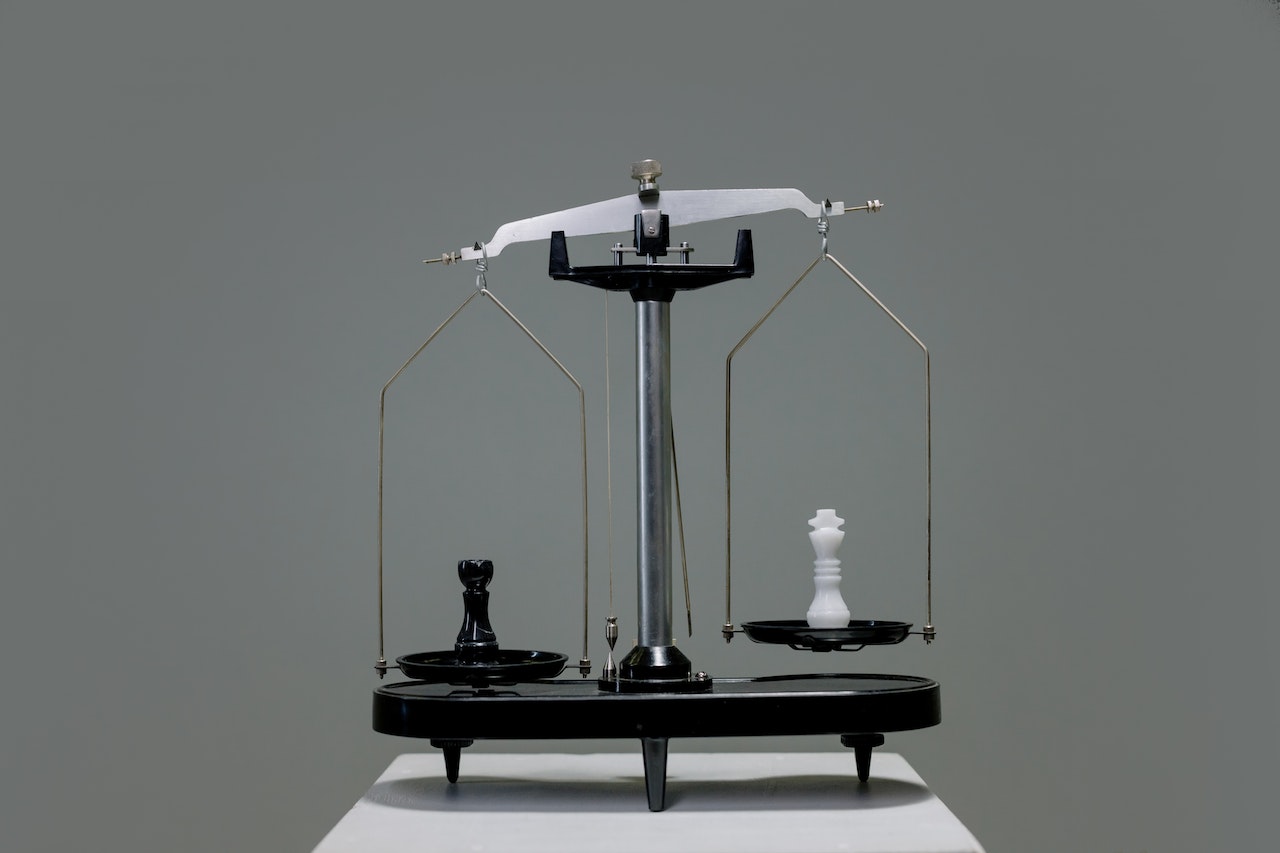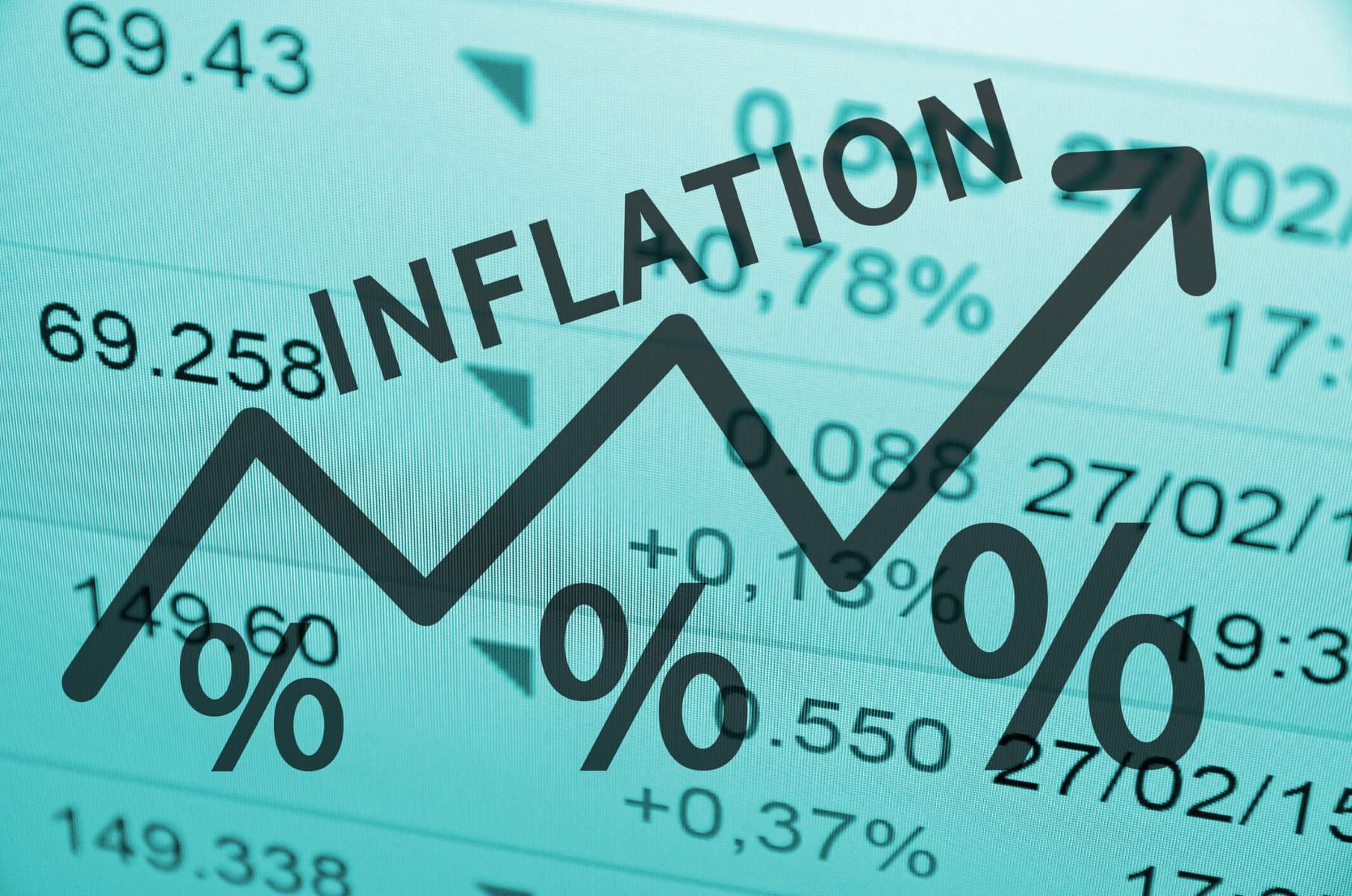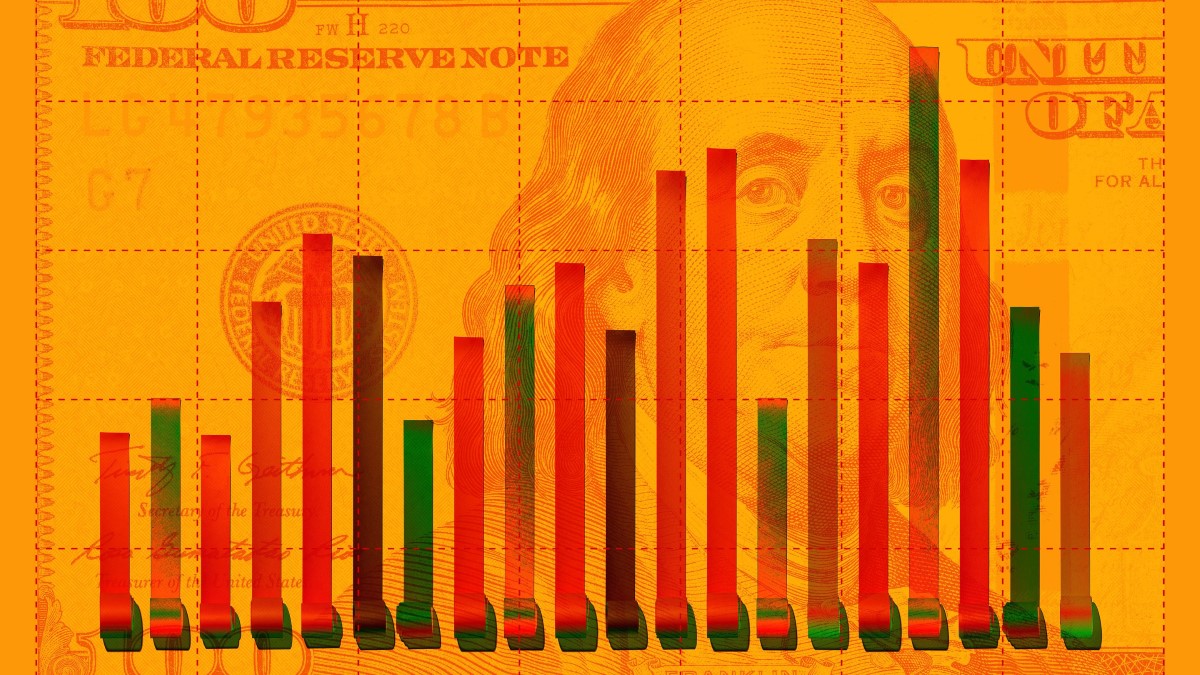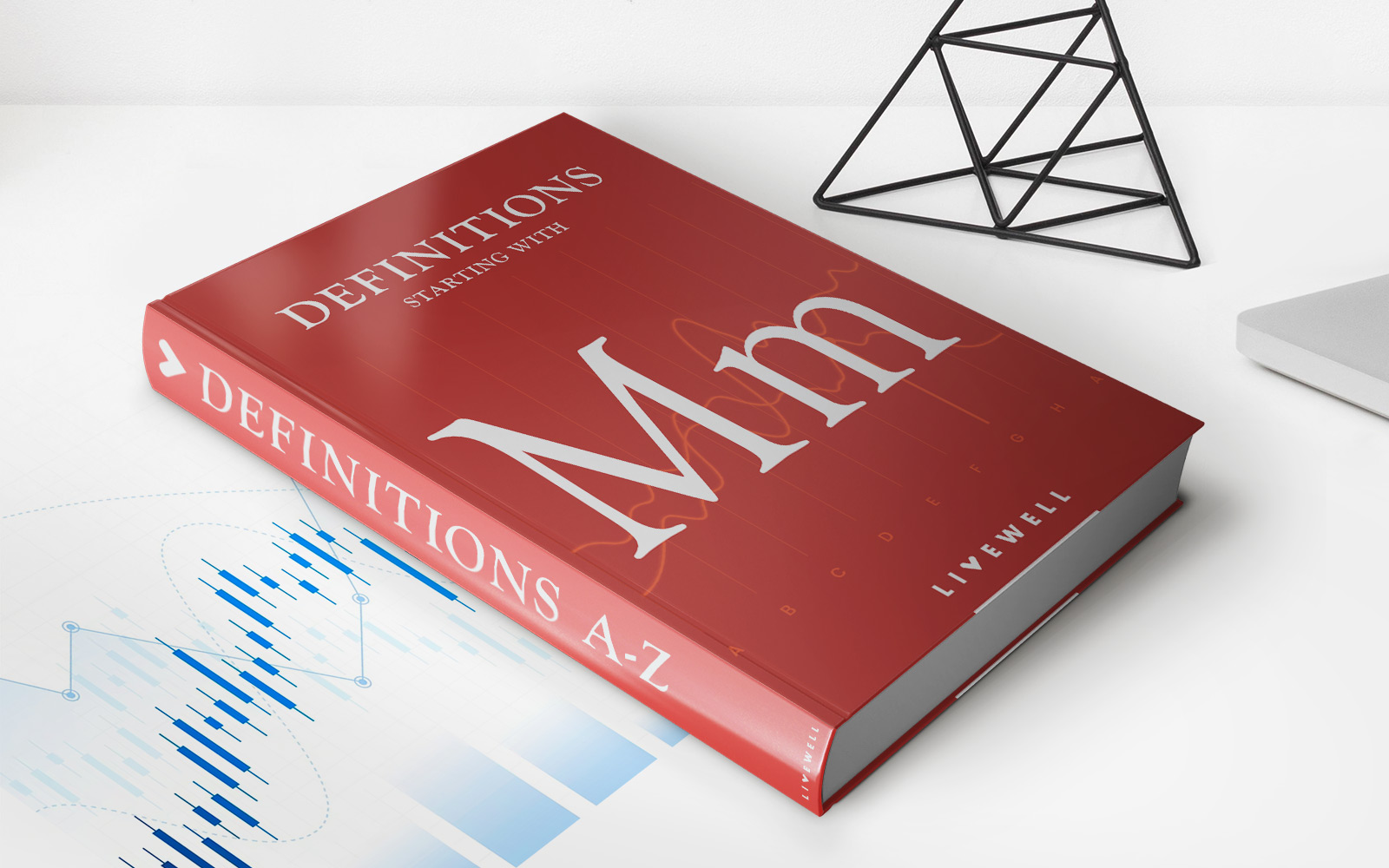

Finance
How Does Inflation Affect Savings?
Published: October 19, 2023
Learn how inflation impacts your savings and find out effective strategies to navigate its effects in the realm of finance.
(Many of the links in this article redirect to a specific reviewed product. Your purchase of these products through affiliate links helps to generate commission for LiveWell, at no extra cost. Learn more)
Table of Contents
- Introduction
- Definition of Inflation
- Relationship between Inflation and Savings
- Effects of Inflation on Savings
- Decreased purchasing power
- Reduced real interest rates
- Increased cost of living
- Impact on fixed-income investments
- Importance of inflation protection
- Strategies for Protecting Savings against Inflation
- Conclusion
Introduction
Welcome to our guide on how inflation impacts savings. Inflation is an important concept in the world of finance, and understanding its implications on your savings is crucial for successful financial planning. Whether you have a savings account, investments, or retirement funds, inflation can significantly affect the value and purchasing power of your hard-earned money.
Before diving into the relationship between inflation and savings, let’s first define what inflation is. Inflation can be defined as the sustained increase in the general price level of goods and services over time. In simpler terms, it means that the cost of living gradually rises, and as a result, the purchasing power of money decreases. While a certain level of inflation is considered normal in a healthy economy, high inflation rates can have detrimental effects on savings.
The relationship between inflation and savings is important because it has a direct impact on your financial goals, such as buying a home, funding your children’s education, or planning for retirement. Inflation erodes the value of your savings over time, which means that what you can buy today with a certain amount of money may cost more in the future due to rising prices.
Now that we understand the basic concept of inflation and its significance, let’s explore the effects of inflation on savings in more detail. By understanding these effects, you will be equipped with the knowledge to make informed decisions regarding your savings and financial goals.
Definition of Inflation
Inflation is a concept that refers to the ongoing increase in the general price level of goods and services in an economy. It is measured by tracking the changes in the Consumer Price Index (CPI) or the Producer Price Index (PPI) over a specific period of time. Inflation is typically expressed as a percentage, reflecting the average increase in prices.
There are various causes of inflation, including demand-pull inflation, cost-push inflation, and built-in inflation. Demand-pull inflation occurs when the demand for goods and services exceeds the supply, resulting in upward pressure on prices. Cost-push inflation, on the other hand, is driven by increases in production costs, such as wages, raw materials, or energy costs. Built-in inflation occurs when expectations of future price increases lead to higher wage demands, causing a self-perpetuating cycle of rising prices.
Inflation affects various aspects of the economy and individuals’ financial well-being. It can influence the purchasing power of money, wage levels, interest rates, and investment returns. Central banks and governments closely monitor inflation levels and implement monetary and fiscal policies to maintain price stability.
While inflation is a normal part of a functioning economy, it’s important to note that high and uncontrolled inflation can have detrimental effects. Hyperinflation, characterized by extremely rapid and out-of-control inflation, can lead to weakened currencies, price instability, and economic instability.
Understanding the definition of inflation is crucial for comprehending its impact on savings. By grasping the causes and dynamics of inflation, individuals can make more informed financial decisions and take steps to protect their savings against its erosive effects.
Relationship between Inflation and Savings
Inflation and savings have an inverse relationship. When inflation rises, the value of savings diminishes over time. This is because the purchasing power of money decreases as prices for goods and services increase. In other words, your savings may not be able to buy as much in the future as they can today.
For example, let’s say you have $10,000 in a savings account with an annual interest rate of 2%. If inflation runs at 3% per year, the real return on your savings is only 2% – 3% = -1%. This means that even though you are earning interest on your savings, the rate of inflation is eroding the purchasing power of your money at a faster rate.
The impact of inflation on savings can vary depending on the inflation rate, the time horizon, and the type of savings or investments. Short-term inflation fluctuations may not have a significant impact on savings, but over the long term, the cumulative effect can be substantial.
Furthermore, inflation affects different types of savings differently. Cash savings accounts, for example, typically offer low-interest rates that may not keep up with inflation. This means that your savings in a regular savings account may not grow enough to offset the rising cost of living. On the other hand, investments like stocks or real estate may offer higher returns that can potentially outpace inflation and preserve or even grow the value of your savings.
It’s important to consider the relationship between inflation and savings when setting financial goals and making investment decisions. By understanding this relationship, you can take proactive steps to mitigate the impact of inflation on your savings and ensure that your financial future remains secure.
Effects of Inflation on Savings
Inflation can have several effects on savings, which can significantly impact your long-term financial goals. Understanding these effects is crucial for effectively managing and protecting your savings. Here are some key effects of inflation on savings:
- Decreased purchasing power: One of the most significant effects of inflation on savings is the decrease in purchasing power. As prices rise over time, the value of your savings diminishes. What you could purchase with a certain amount of money today may require more money in the future due to inflation.
- Reduced real interest rates: Inflation can lead to a decrease in the real interest rates earned on savings. Banks and financial institutions may adjust interest rates to account for inflation, but these rates may not fully compensate for the rising cost of living. This means that the growth of your savings may not keep pace with inflation, resulting in a loss of value over time.
- Increased cost of living: As prices rise, the cost of living also increases. Everyday expenses such as groceries, housing, healthcare, and education become more expensive. If your savings do not grow at the same rate as inflation, it becomes more challenging to maintain your standard of living and meet financial obligations.
- Impact on fixed-income investments: Fixed-income investments such as bonds and savings accounts can be particularly susceptible to the effects of inflation. These investments typically offer fixed interest rates, which may not keep pace with inflation. As a result, the real return on these investments may be negative, leading to the erosion of the value of savings.
- Importance of inflation protection: In light of these effects, it becomes essential to protect your savings against inflation. Failing to account for inflation’s impact can significantly derail your financial plans. By implementing strategies to offset the effects of inflation, such as investing in assets with potential for growth or considering inflation-protected securities, you can minimize the erosion of your savings’ value.
Understanding the effects of inflation on savings is crucial for long-term financial planning. By being proactive and taking steps to mitigate these effects, you can safeguard your savings and ensure they continue to support your financial goals even in the face of inflation.
Decreased purchasing power
One of the most significant effects of inflation on savings is the decreased purchasing power of money. Inflation erodes the value of your savings over time, meaning that the same amount of money will buy fewer goods and services in the future.
Let’s consider an example to illustrate this effect. Suppose you have $1,000 in your savings account, and the inflation rate is 3% per year. After one year, the purchasing power of your $1,000 will effectively decrease. If prices for goods and services increase by 3%, you will need $1,030 to buy the same items you could have purchased with $1,000 a year ago. Therefore, the value of your savings in terms of what it can buy has diminished.
This decrease in purchasing power can have a compounding effect over time. As inflation continues to rise, the value of your savings decreases further, and you need more money to maintain the same standard of living. This is especially important to consider when saving for long-term goals, such as retirement. The income or savings you accumulate now may not be enough to support your desired lifestyle in the future due to the impact of inflation.
To combat the decreased purchasing power caused by inflation, it is important to invest your savings wisely. Putting your money into investments that have the potential to outpace inflation, such as stocks, real estate, or inflation-protected securities, can help preserve the purchasing power of your savings and even allow it to grow over time.
In summary, inflation decreases the purchasing power of your savings as prices for goods and services rise. This effect highlights the importance of actively managing your savings and considering investments that can offset the impact of inflation. By doing so, you can protect the value of your savings and ensure they retain their ability to support your financial goals in the face of rising prices.
Reduced real interest rates
Another effect of inflation on savings is the reduction in real interest rates. Real interest rates represent the return on your savings after accounting for inflation. When inflation rises, it can often outpace the interest rates offered by banks and other financial institutions, resulting in a decrease in the real return on your savings.
Let’s say you have a savings account with a nominal interest rate of 2% per year. If the inflation rate is 3%, the real return on your savings is actually negative (-1%). In this scenario, the growth of your savings is not keeping up with the rising cost of living, and the purchasing power of your money is diminishing.
This reduction in real interest rates can have a significant impact on your savings over time. If your savings are earning a lower return than the rate of inflation, the value of your savings is effectively eroding. This effect is more pronounced with long-term savings goals, as the cumulative impact of inflation can be substantial.
It’s important to carefully consider the interest rates offered by different financial institutions and investment options. Look for opportunities to maximize your returns and ensure they exceed the rate of inflation. This might involve exploring higher-yield savings accounts, certificates of deposit, or other investment vehicles that have the potential to provide a more competitive return.
Additionally, diversifying your savings portfolio can help mitigate the impact of reduced real interest rates. By spreading your savings across different investment types, such as stocks, bonds, and real estate, you can potentially achieve higher returns and better protect your savings against the erosion caused by inflation.
In summary, inflation can significantly reduce the real interest rates earned on your savings. When the rate of inflation exceeds the interest rate, the purchasing power of your savings diminishes. To combat this effect, it’s important to seek out competitive interest rates and consider diversifying your savings portfolio to achieve higher returns and protect your savings from the harmful impact of inflation.
Increased cost of living
One of the tangible effects of inflation on savings is the increased cost of living. As inflation continues to rise, the prices of goods and services increase, which in turn affects your daily expenses and overall cost of living.
When the cost of living rises, it becomes more expensive to purchase the same goods and services that you previously could afford. Basic necessities such as food, housing, healthcare, transportation, and education become more costly over time. This means that you may need to spend a larger portion of your savings to meet your ongoing expenses.
For example, let’s say you have a fixed monthly budget for groceries. As inflation drives up the prices of food items, you may find yourself paying more for the same groceries you used to buy. This increase in prices puts pressure on your savings as you have to allocate more funds to cover your essential needs.
The increased cost of living impacts both short-term financial decisions and long-term financial goals. Your ability to save and invest for the future may be hindered by the rising expenses. Additionally, if your savings do not grow at a rate that outpaces inflation, it becomes more challenging to maintain your desired standard of living as time goes on.
To combat the effect of the increased cost of living, it’s important to regularly evaluate your budget and expenses. Look for opportunities to save money, such as finding more affordable alternatives for products or services. Additionally, consider increasing your savings contributions to account for the rising prices and ensure that you are on track to meet your financial goals.
Furthermore, investing your savings in assets that have the potential for growth can help counteract the increased cost of living. By generating higher returns on your investments, you can potentially stay ahead of inflation and have the financial means to support your desired lifestyle.
In summary, inflation leads to an increased cost of living, which can significantly impact your savings. It becomes more expensive to afford basic necessities and maintain your desired standard of living. To combat this effect, regularly review your budget, look for cost-saving opportunities, and consider investments that can outpace inflation to ensure your savings can support your financial needs.
Impact on fixed-income investments
Inflation can have a significant impact on fixed-income investments, which are investments that provide a fixed return over a certain period of time, such as bonds, certificates of deposit (CDs), or savings accounts. These investments can be particularly vulnerable to the effects of inflation.
When inflation rises, the purchasing power of the fixed return from these investments decreases. The fixed interest rates offered by bonds, CDs, and savings accounts may not keep up with the rate of inflation, resulting in a reduction in the real value of your savings. This means that even though you are earning a fixed rate of return, the rising cost of living erodes the purchasing power of your money.
For example, let’s say you invest $10,000 in a bond that offers a fixed interest rate of 2% per year. However, if inflation runs at 3% per year, the real return on your investment becomes negative (-1%). This means that after accounting for inflation, you are effectively losing purchasing power and the value of your savings is diminishing.
The impact on fixed-income investments can be particularly challenging for retirees or individuals who rely on the income generated from these investments to cover their living expenses. If the rate of inflation exceeds the interest rates earned on fixed-income investments, it can erode their savings and put a strain on their financial well-being.
To combat the impact of inflation on fixed-income investments, individuals may consider diversifying their investment portfolio to include assets that have the potential for higher returns. This could include allocating a portion of their savings to investments such as stocks or real estate, which historically have shown the ability to outpace inflation over the long term.
Furthermore, investing in inflation-protected securities, such as Treasury Inflation-Protected Securities (TIPS), can provide a hedge against inflation. These securities adjust their value based on changes in the Consumer Price Index (CPI), ensuring that your investment keeps pace with inflation and maintains its real value over time.
In summary, inflation can have a detrimental impact on fixed-income investments as the fixed returns may fail to keep up with rising prices. This can lead to a decrease in the real value of your savings and income generated from these investments. Exploring diversification and considering investments that offer the potential for higher returns or protection against inflation can help mitigate the impact on your savings and investment portfolio.
Importance of inflation protection
Given the detrimental effects of inflation on savings, it is crucial to prioritize inflation protection when managing your finances. Inflation protection refers to strategies and investments aimed at preserving the purchasing power of your savings and mitigating the negative impact of rising prices.
The importance of inflation protection cannot be overstated, especially when it comes to long-term financial goals such as retirement planning. Without adequate protection against inflation, the value of your savings may erode over time, making it more challenging to maintain your desired standard of living in the future.
One effective way to protect your savings against inflation is to invest in assets that have historically outperformed inflation, such as stocks, real estate, or commodities. These investments have the potential for growth that can outpace the rate of inflation, helping to preserve the purchasing power of your savings and generate a positive real return.
Another option for inflation protection is investing in inflation-protected securities, such as Treasury Inflation-Protected Securities (TIPS). These bonds adjust their principal value based on changes in the Consumer Price Index (CPI), ensuring that your investment keeps pace with inflation. TIPS offer a guaranteed real rate of return and provide a reliable hedge against inflation.
Furthermore, diversification is a key strategy for inflation protection. By diversifying your investment portfolio across different asset classes, industries, and geographic regions, you can spread risk and potentially capture higher returns. This diversification can include a mix of stocks, bonds, real estate, and other investments that have shown resilience against the impact of inflation over time.
Additionally, it’s important to regularly review and adjust your savings and investment strategies to ensure they align with the changing economic landscape and inflationary pressures. Staying informed about economic trends and working with a financial advisor can help you make proactive decisions regarding inflation protection.
Protecting your savings against inflation is not a one-time task but an ongoing process. By implementing strategies for inflation protection, you can ensure that your savings retain their value and continue to support your financial goals and aspirations, even in the face of rising prices.
Overall, recognizing the importance of inflation protection and taking proactive measures to safeguard your savings can help secure your financial future and provide peace of mind in an ever-changing economic environment.
Strategies for Protecting Savings against Inflation
Protecting your savings against the erosive effects of inflation is essential for maintaining your financial security and achieving long-term financial goals. Here are some effective strategies to consider:
- Invest in assets that outpace inflation: Allocate a portion of your savings to investments that historically have shown the potential to outpace inflation, such as stocks, real estate, or commodities. These assets have the potential for growth that can help preserve the purchasing power of your savings over time.
- Consider inflation-protected securities: Explore investments in inflation-protected securities, such as Treasury Inflation-Protected Securities (TIPS). These bonds adjust their value based on changes in the Consumer Price Index (CPI), ensuring that your investment keeps pace with inflation and maintains its real value.
- Diversify your portfolio: Spread your investments across different asset classes and industries to mitigate risk and capture potential returns. Diversification can help protect your savings against the impact of inflation by limiting exposure to a single asset that may be negatively affected.
- Regularly review and adjust your investments: Stay informed about market conditions and economic trends. Regularly review and adjust your investment portfolio to ensure it aligns with the changing inflationary environment. Evaluate your investments’ performance, consider rebalancing, and make necessary adjustments to protect against the potential impacts of inflation.
- Invest in income-generating assets: Consider investments that generate income, such as dividend-paying stocks or rental properties. These income streams can help counter the effects of inflation by providing a steady cash flow that may increase over time.
- Save and invest consistently: Regularly contribute to your savings and investment accounts to ensure that you are staying ahead of inflation. Consistent saving and investing over time allow your savings to grow and potentially outpace inflation, helping to maintain your purchasing power.
- Consider tax-advantaged accounts: Explore tax-advantaged accounts, such as Individual Retirement Accounts (IRAs) or 401(k) plans, which provide tax benefits for retirement savings. These accounts offer opportunities for growth and can help protect your savings against the impact of inflation while providing tax advantages for your contributions.
- Maintain an emergency fund: Set aside funds in an emergency savings account to cover unexpected expenses. Having a financial safety net can help prevent the need to tap into long-term savings during times of inflationary pressure or economic uncertainty.
Remember, each individual’s financial situation and goals are unique, so it’s important to tailor these strategies to your specific needs. Working with a financial advisor or professional can provide personalized guidance and help you develop a comprehensive plan to protect your savings against inflation.
By implementing these strategies, you can safeguard your savings, preserve their value, and ensure that they continue to support your financial well-being and future aspirations, even in the face of inflationary pressures.
Conclusion
In conclusion, understanding the relationship between inflation and savings is crucial for successful financial planning. Inflation, which represents the ongoing increase in the general price level of goods and services, can have a significant impact on the value and purchasing power of your savings over time.
We have explored the effects of inflation on savings, including decreased purchasing power, reduced real interest rates, increased cost of living, and the impact on fixed-income investments. These effects highlight the importance of actively managing your savings to mitigate the negative impact of inflation and protect the value of your hard-earned money.
To protect your savings against inflation, it’s important to implement strategies such as investing in assets that outpace inflation, considering inflation-protected securities, diversifying your investment portfolio, and regularly reviewing and adjusting your investments. Additionally, saving consistently, maintaining an emergency fund, and exploring tax-advantaged accounts can further safeguard your savings and provide financial security.
It’s crucial to recognize that inflation is a normal part of a functioning economy, and a certain level of inflation is considered healthy. However, when inflation rates are high and uncontrolled, they can have detrimental effects on savings. By being proactive and taking steps to protect your savings against inflation, you can ensure that your savings continue to support your financial goals, provide for a comfortable future, and maintain your desired standard of living.
Remember, financial planning is a continuous process, and it’s important to regularly reassess your savings strategies and adjust them as needed to adapt to changing economic conditions and inflationary pressures. Seeking guidance from a financial advisor can provide valuable insights and personalized advice to help you navigate inflation and protect your savings effectively.
By implementing these strategies and staying informed about inflation trends and their impact on your savings, you can take control of your financial future and ensure that your savings remain resilient against the erosive effects of inflation.














